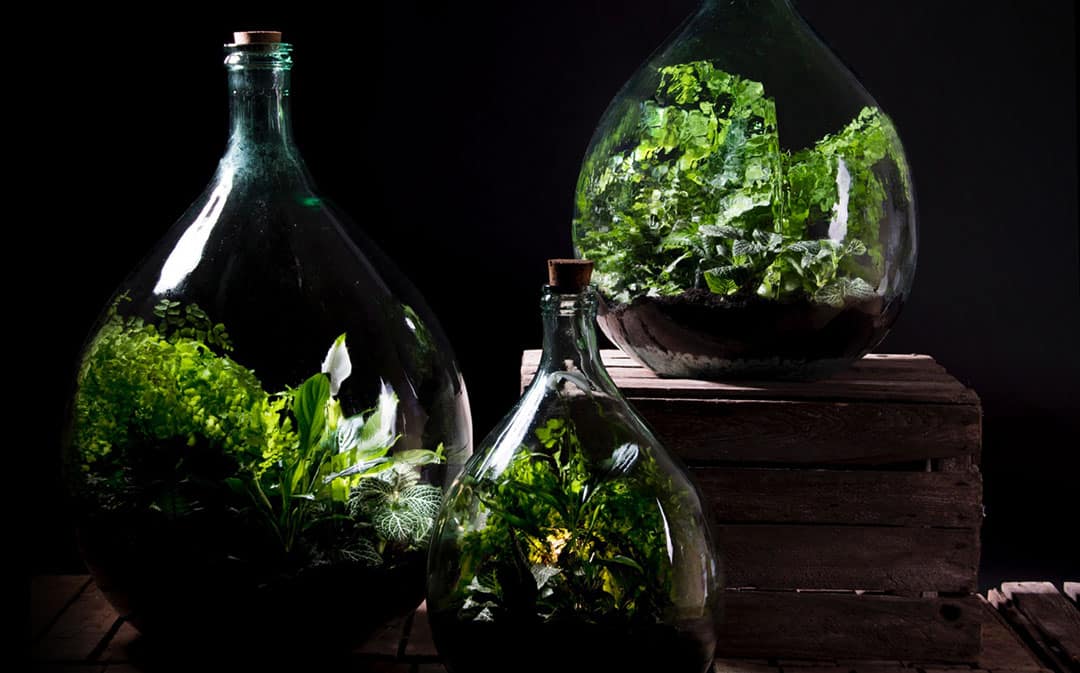
Terrariums are plants in bottles or glass boxes. They originate from the eighteenth century. In this period, glass bottles and crates were used to bring plants and seeds from one side of the world to the other.
There are different types of terrariums, closed, open and half-open. In this blog we provide information about the closed terrarium.
A closed terrarium can, in contrast to the open and half-open terrariums, grow into a self-sufficient mini-ecosystem. The plants adapt and become self-sufficient over time.
A self-sufficient mini eco system
Water is added to the bottle before the jar is closed. This water evaporates but cannot escape from the bottle or pot, and drips back into the soil so that the plants can absorb it again through the roots.
Due to the constant evaporation, the humidity in a closed terrarium is high, so use plants that like a moist atmosphere, for example Asplenium, Hypoestes Phyllostachya and Phlebodium Aureum. Dying leaves of the plants are converted into nutrients, and the plants in the terrarium take up these substances again. External factors that a closed terrarium requires are light and heat.
The most famous bottle of the current time is that of David Latimer. He planted it in 1960 and it has only be opened once in 1972 to be watered. The bottle is still in his house.
How to create a closed terrarium for plants
You will need: terrarium bottle, funnel or rolled up piece of paper, drainage stones, carbon, rake, scoop, soil, watering can, water and plants.
1. Apply the drainage layer of approx. 2 cm. Divide the stones with the rake.
2. Add the active carbon.
3. Add the soil. Enough, so that the plants can be planted easily, approx. 5 – 7 cm.
4. Add the plants. Make one or more holes with the scoop and add the plants with the rake (from which the soil is removed). Scoop the soil back so that the roots are covered.
5. Add water. Hold the spout on the inside of the bottle and turn the bottle when adding water.
6. Let the bottle rest. Put the bottle in a light place, but not in direct sunlight. Leave the cork out of the bottle for the first week, and then in the second week put the cork half in the bottle.
7. Close the bottle. If there is no more condensation after two weeks, the bottle can be closed with the cork.